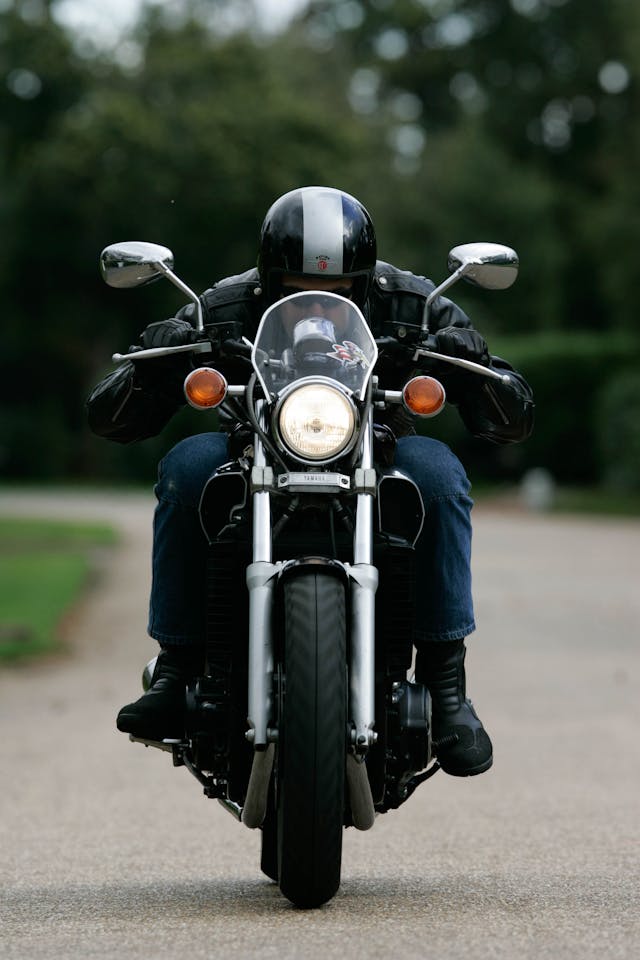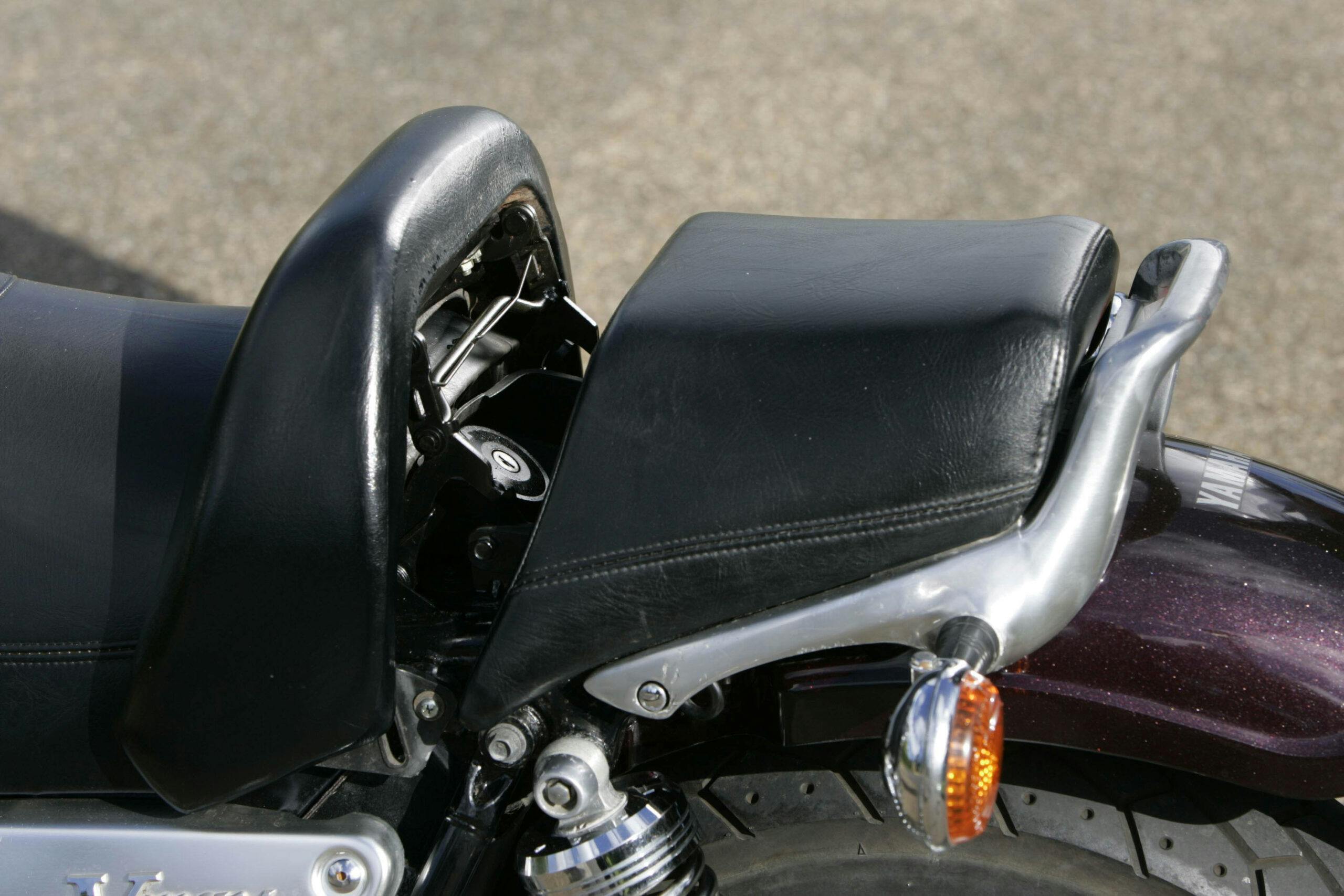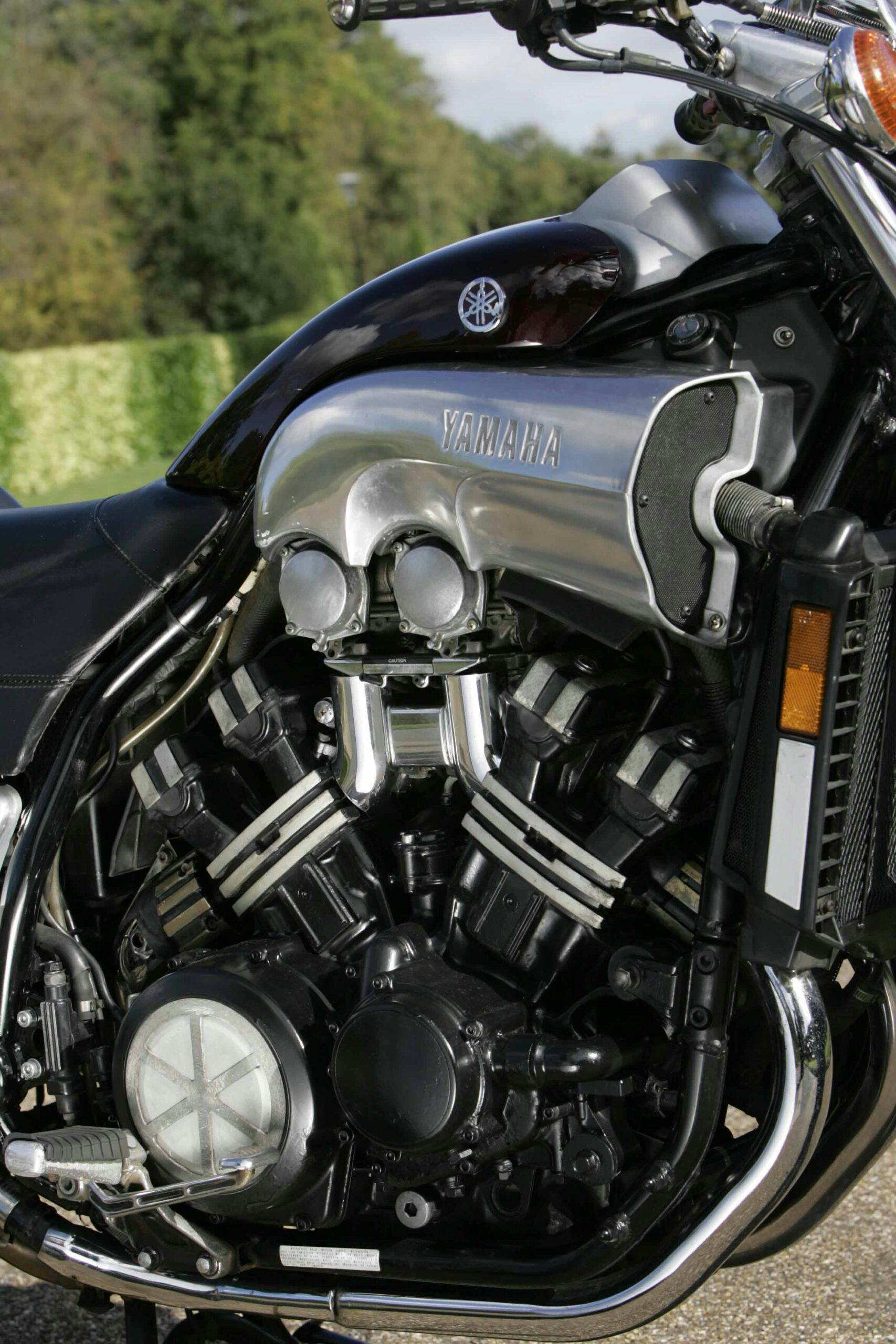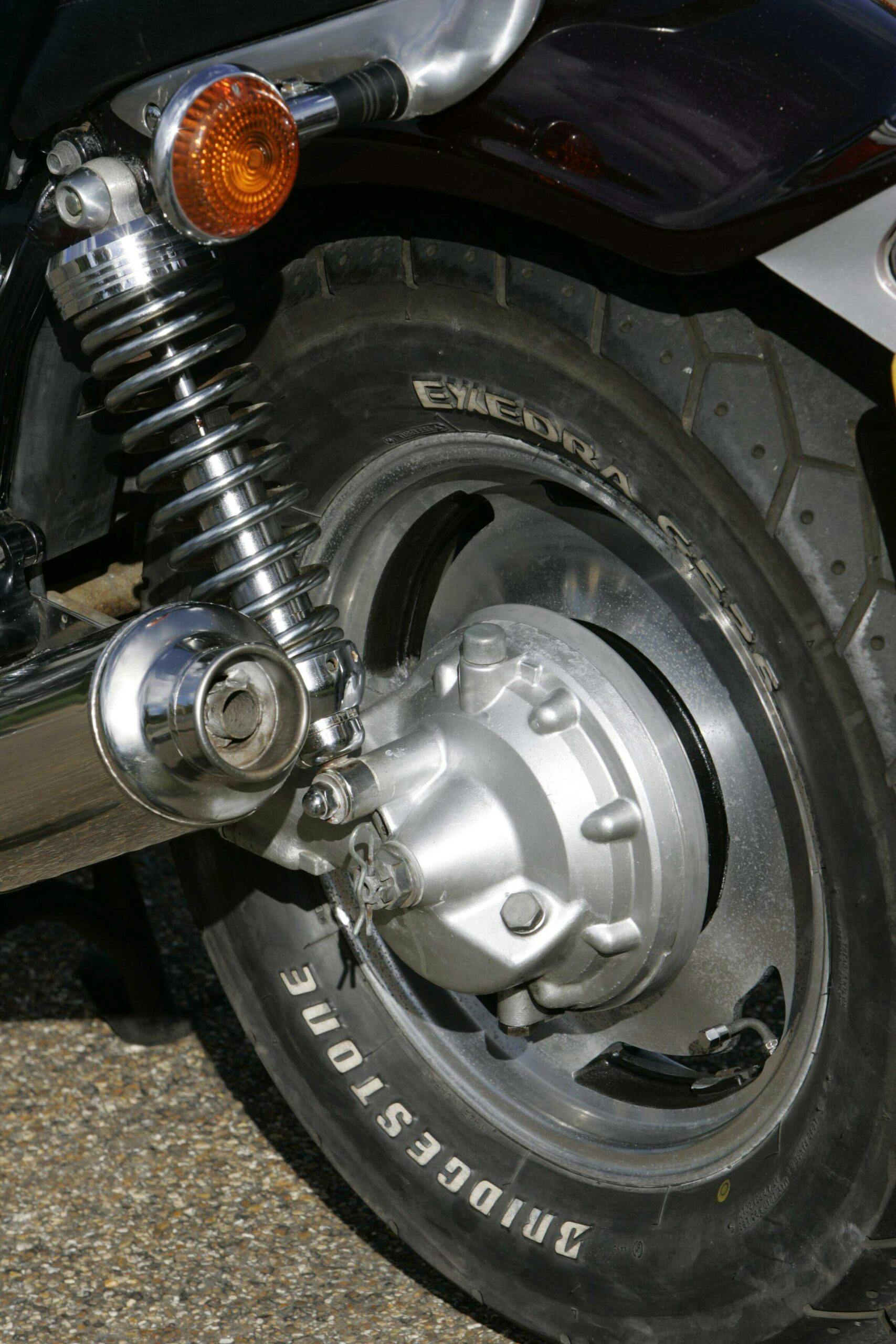This Yamaha motorcycle thought it was a muscle car
Modern motorbikes are a cosmopolitan bunch. Many are designed and developed on several continents, produced using parts sourced from numerous countries, and sold all around the world.
Things were very different in 1985, when the Yamaha V-Max stormed onto the scene. This spectacular and brutally powerful V4 was built in Japan but conceived, largely designed, and initially sold only in the United States.
Yamaha created the V-Max as a two-wheeled equivalent of a muscle car, an attitude emphasized by the big aluminum air scoops jutting out from the sides of its dummy gas tank. The scoops and the tank were fake. The high-octane performance was real.
Decades later, it takes only the briefest of blasts to confirm that. When the traffic briefly cleared on a wide main road, I wound back the throttle. The big DOHC, 1198cc engine breathed deeply and went to work, revving hard to send the Yamaha storming forward like a rampaging buffalo.

For the next few seconds it was a wild and exciting ride. I was hanging on tight, the cold wind ripping at my carelessly fastened jacket, with no time to glance down at the speedo, let alone the tiny rev-counter set into the top of the dummy tank.
That sort of performance was mind-blowing when Yamaha’s V4 was launched more than 35 years ago, and it remains exhilarating now. Not least because the bike’s chassis sometimes struggles to cope, meaning that excitement of a different kind is common.
A curve loomed up, so I shut off the throttle and squeezed the front brake lever. As the raised handlebars twitched slightly from side to side, the Yamaha slowed only reluctantly, its front brake feeling wooden, then spongy when I squeezed harder.
I made the corner without problem, since the V-Max’s hairy reputation ensured that I’d allowed plenty of leeway. You learn to expect that feeling of being slightly on the edge of control. Arguably, it’s part of the bike’s appeal.

The ’Max was built for the States, but the engineer who led its development team was Japanese. Akira Araki was inspired by Americans’ passion for drag racing and hot rod cars. On a trip to the U.S. he’d been fascinated by a “bridge race,” in which pairs of bikes had lined up for an unofficial dash across the Mississippi River:
“The rules were simple: They started from one side of the bridge, and the finish line was the opposite side,” he said. “The idea I had from this race was to make a bike that was strong in a straight line and really fast.”
Araki took his idea of a V4-powered dragster bike to GKDI Design, a Yamaha design office in Santa Monica, California. There he spent almost a month developing his ideas, in collaboration with an engine designer, bodywork designer, and a senior Yamaha U.S. product planner.
Yamaha already had a liquid-cooled 72-degree, V4 engine that had been designed for a luxury tourer called the Venture Royale, but developing it to power the new muscle-bike was difficult. That motor made most of its output at low revs, was hampered by emissions regulations, and its 90-hp maximum output was lower than Yamaha had wanted for a tourer, let alone a performance-oriented model.
Conventional tuning mods gave the V-Max unit bigger valves, hotter camshafts and lightened pistons, but Araki needed more power. The answer was V-boost, a novel way of linking paired carburetors’ intakes so that at high revs each cylinder was fed by two carbs instead of one. The result was an impressive maximum of 143 hp at 8000 rpm, with a step when the V-boost kicked in at about 6000 rpm.

Styling caused heated debate at GKDI, but eventually the team completed a full-scale drawing. Enthused by the radical concept machine, they flew back to Japan to present it before Yamaha. The verdict was disappointing. “The style was too eccentric for people at that time, and nobody knew how to react,” Araki said.
Even so, the V4 was cleared for production, and in October 1984 the V-Max was presented to U.S. Yamaha dealers at a convention in Las Vegas, where it received a rapturous reception. The dealers’ excitement was matched by strong sales when the bike went on sale the following year.
The big V4 looked right, and it went right. It stomped away from a standstill harder than any other production vehicle, frequently leaving a black stripe with its fattest-yet 150-section rear tire.
This quickly earned the V-Max a cult following in the States, and a year later the Yamaha went on sale in some European markets, after a campaign by the French importer. It was well received, despite being restricted to around 100 hp in most countries (130 in the U.S.) by having its V-boost snipped.
Thankfully my 1987 model test bike was originally sold in Canada so had suffered no such indignity, and could show that even a full-power V-Max is improbably easy to ride. The slightly raised bars gave an upright, roomy riding position that combined with fairly soft suspension to make the bike comfortable in town.
The Yamaha felt quite tall and heavy but its 551-plus-pounds of weight was carried low, thanks partly to the under-seat fuel tank. Low-rev carburetion was crisp, vibration minimal. The five-speed ‘box shifted sweetly without hindrance from the drive shaft.
All was calm and controlled until I reached a straight road, tightened my grip, and wound back the throttle. When the needle of the tiny, tank-mounted tach hit 6000 rpm and the V-boost kicked in, I was suddenly glad of the stepped seat: The V-Max tore forward as though fired from a catapult.

Like most V-Max pilots, I backed off the throttle before the distinctly unaerodynamic bike reached its top speed of about 140 mph. Back in 1985, that was more than fast enough, especially given that U.S. riders were still stuck with the 55-mph speed limit that had been introduced during the previous decade’s oil crisis.
Handling wasn’t as bad as some reports indicated, but given the ’Max’s size, weight, and performance it’s not surprising that high-speed wobbles are a possibility. The chassis comprises a simple tubular steel frame, slender 40-mm forks, and a basic pair of rear shocks.
As my ride suggested, the V-Max rarely tends to get seriously out of shape. It just feels big and cumbersome, steers slowly, and lurches slightly through fast curves, especially with the throttle shut. An aluminum fork brace helps prevent the spindly legs from bending under the strain.
Not that those forks have to withstand huge braking forces. The front discs are gripped by puny calipers similar to those of Yamaha’s far lighter RD350LC. Thankfully, the rear disc gives some valuable assistance.
Yamaha finally uprated the brakes and suspension in 1993, fully eight years after the ’Max’s launch. By this time it had become a cult vehicle in many major global markets, despite being almost unchanged from the original.
Remarkably, the V-Max soldiered on until 2008, when it was finally replaced by an all-new model, having sold roughly 100,000 units. This most American of Japanese motorbikes had captivated the motorcycling world.

1987 Yamaha V-Max
Highs: Straights with the throttle wound open
Lows: Bends if you have to brake hard
Takeaway: Still has mighty muscles in middle age
—
Price: Project, $2200; nice ride, $4300; showing off, $8100
Engine: Liquid-cooled, 72-degree V4
Capacity: 1198cc
Maximum power, Canadian spec: 143 bhp @ 8000 rpm
Weight: 560 pounds without fluids
Top speed: 140 mph
***
Check out the Hagerty Media homepage so you don’t miss a single story, or better yet, bookmark it. To get our best stories delivered right to your inbox, subscribe to our newsletters.
Via Hagerty UK







Always liked these!
Not one frigin mention of how good these puppies sound?? They’re second (now) to the flat plane R1 in sonorous engine note.
Had a brand new 2006. Pilot jets way too lean. Once you got going look out especially when V Boost kicks in!
The only bike that beat my v-65 back in the day!
1985 the last 1000 Sportster. Yes i have drank the cool aid.
Great Article
Was in Las Vegas @ the SEMA Show,1984 when I was introduced to the V-Max doing long burn out’s in the parking lot. Love at first sound, called my local dealer and bought one right then, still have it. Can tell you for a fact with a few minor mods, super tune, This bike smokes way past 140 MPH.
Definitely the most fun you can have with your pants on. I got my first one in 1998. It wasn’t long until I met up with the late, great, Jon Cornell and we became good friends. One of Jon’s beautiful full exhaust and a few other minor tweaks and the needle was in. I’ve had numerous Gen I Vmax and still have the first ’98 plus a totally astounding Gen II which I bought in the crate and still have. Accessorized with all the UFO goodies, the ’09 is a force to be reconed with and not for the faint of heart.
It was a nice bike. I always liked Yamaha.
Handling is slightly better than an old KZ but not much. A w e s o m e power. The most powerful ‘stock’ bike I have ever ridden. peace
Very nice. Thanks for sharing.
Owned an 86 VMax and had just 3 issues. Flimsy front end, which made highway rides out of the question, small gas tank under the seat and the handlebars should have been back towards the rider a few inches. Otherwise, it was an absolute thrill to ride!
Have ridden and owned many bikes through the years, but my 79 Yamaha XS1100 Special is by far the best all around bike! Bought it new and still get compliments about it every where I go!!